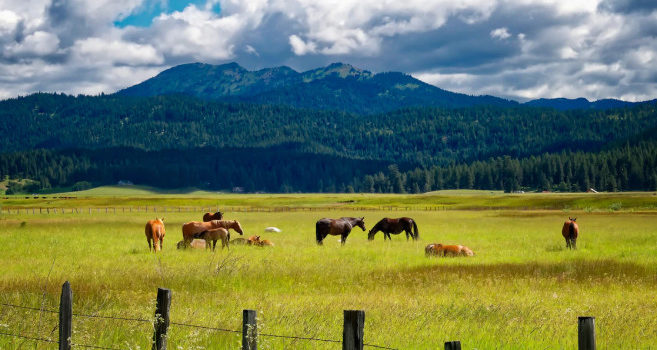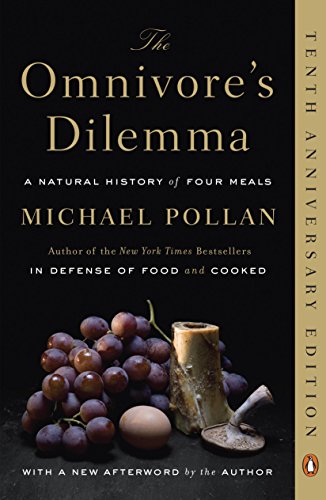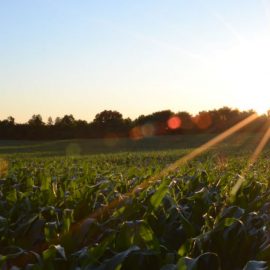

This article is an excerpt from the Shortform summary of "The Omnivore's Dilemma" by Michael Pollan. Shortform has the world's best summaries of books you should be reading.
Like this article? Sign up for a free trial here .
How did organic food begin? How did the organic food movement start, and what’s the timeline of events?
Learn more about the beginning of organic food and tracing it to its massive popularity today.
History of the Organic Food Movement
Organic agriculture has its roots in the sixties, when “agrarian reformers” sought to grow “uncontaminated food.” This led to the commune movement, and then to the organic movement.
It was founded on the ecological premise that everything’s connected. What you eat is connected to how it was grown and got to your table. The movement rejected the use of chemical fertilizers and pesticides in favor of alternate methods of pest control.
The organic food movement was built on the philosophy of Sir Albert Howard, an English agronomist who wrote in the 1940s, but whose ideas were revived in the 1970s by Rodale’s Organic Gardening and Farming magazine.
In Howard’s time, chemists were contending that plants needed only three ingredients for growth, which could be produced artificially: nitrogen, phosphorous, and potassium or NPK. Howard argued that this was an oversimplification. This science-driven” industrial mindset ignored the complexity of the growth process. For instance, it left out the biological process that takes place in humus. Humus is what’s left of organic matter after it’s been broken down by billions of organisms. An additional group of organisms breaks down humus into the components plants need, via both chemical and biological processes. Humus creates nutrients as well as minerals that hold water in soil.
This is more complex than just adding three elements in chemical form (which makes plants more susceptible to insects and disease, and ultimately less nourishing).
By contrast, Howard promoted organic farming in conjunction with nature. He contended the health of soil, plant, animal, human, and nation are connected. Howard’s views were reintroduced and popularized in Rodale’s magazine, and also by essayist and sustainable farming advocate Wendell Berry. The history of organic food can be traced back here.
Co-opting the Organic Food Movement
The traditional organic movement continues to honor its founding principles. But Big Organic, which developed to meet the demand for large quantities of organic food by big food companies, has come to resemble the industrial system it set out to replace.
The evolution of Cascadian Farm from its organic origins to a megafarm today shows how this happened in the history of organic food. Gene Kahn and Cascadian Farms grew out of the commune movement. Now it’s owned by General Mills. Kahn was a pioneer of the organic movement and pushed it into the mainstream.
By the late seventies, Kahn had become a skilled farmer and discovered the benefits of value-added innovations like freezing blueberries, making jam. He could make more money by processing food bought from other farmers than by just growing it himself. He began shipping products around the country.
Demand for organic food from supermarket chains exploded beginning in 1990 with the “Alar scare,” in which the pesticide widely used by apple growers was discovered to be a carcinogen. This was followed by other scares: food poisoning, mad cow disease, and GMO crops.
Kahn borrowed money to expand. When Americans’ food safety concerns died down and organic sales started to level off or decline, he found himself overextended and was forced to sell his majority stake in Cascadian.
The organic industry recovered and started growing again as mainstream food companies acquired organic brands; Kahn took an executive position with Cascadian Farm.
Also in 1990, the government created a board to set organic standards. Agribusiness wanted to define organic as broadly as possible, so it could cash in on selling the increasingly popular organic foods without changing its production methods much. The definition grew to encompass factory farms where animals lack access to grass, use of chemicals, and a long list of permissible synthetic additives.
While organic food was more environmentally responsible than industrial food, the broad definition eliminated many of the original philosophical values, and opened the way for adopting industrial practices. Nonetheless, the image of organic food in many people’s minds is still pastoral. They don’t realize there are two organic production systems.
———End of Preview———

Like what you just read? Read the rest of the world's best summary of Michael Pollan's "The Omnivore's Dilemma" at Shortform . Learn the book's critical concepts in 20 minutes or less .
Here's what you'll find in our full Omnivore's Dilemma summary :
- What does Omnivore's Dilemma mean?
- Why is industrial farming so bad for you and the environment?
- How did corn and its byproducts (like corn syrup) end up in tens of thousands of foods?
- How is Industrial Organic food like at Whole Foods not much better than massive industrial farming?
- What happens when you try to forage for your own food?






